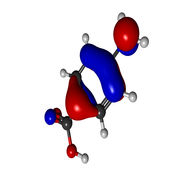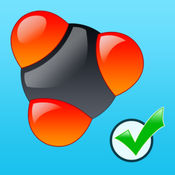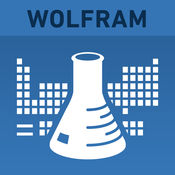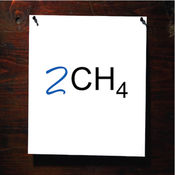-
Category Education
-
Rating 5
-
Size 11.3 MB
Atoms and ions are brought to life in Salts a fully interactive atomistic simulation that reveals the motions of atoms and ions as they interact to form beautiful crystals. Discover the physics behind the structures and properties of these minerals, and explore the effects of charge and ionic radii on melting points, bond strength, and crystal lattices. Enjoy the atoms (and the ions)
Salts: atoms, ions, electrons alternatives
WebMO: Molecule Editor, Viewer, and Computational Chemistry Interface
WebMO allows users to build and view molecules in 3-D, visualize orbitals and symmetry elements, lookup chemical information and properties from external databases, and access state-of-the-art computational chemistry programs. WebMO is recommended for students and faculty in high school, college, and graduate school who desire mobile access to molecular structures, information, and calculations. WebMO capabilities include:- Build molecules by drawing atoms and bonds in a 3-D molecular editor, or by speaking the name (e.g., aspirin)- Optimize structures using VSEPR theory or molecular mechanics- View Huckel molecular orbitals, electron density, and electrostatic potential- View point group and symmetry elements of molecules- Lookup basic molecular information, including IUPAC and common names, stoichiometry, molar mass- Lookup chemical data from PubChem and ChemSpider- Lookup experimental and predicted molecular properties from external databases (NIST, Sigma-Aldrich)- Lookup IR, UV-VIS, NMR, and mass spectra from external databases (NIST, SDBS)- Capture high-resolution molecular images- Save and recall molecular structures locally- Export and import structures via emailWebMO is also a front-end to WebMO servers (version 14 and higher):- Supports Gaussian, GAMESS, Molpro, MOPAC, NWChem, ORCA, PQS, PSI, Quantum Espresso, VASP, Q-Chem, and Tinker computational chemistry programs- Submit, monitor, and view calculations- View formatted tabular data extracted from output files, as well as raw output- Visualize geometry, partial charges, dipole moment, normal vibrational modes, molecular orbitals, and NMR/IR/UV-VIS spectra
-
rating 5.0
-
size 19.5 MB
3D Molecules Edit & Test
3D Molecules Edit & Test allows one to build and manipulate 3D molecular models of organic and inorganic compounds. The key features of 3D Molecules Edit & Test are 3D printing support and the Test yourself mode that allows learners to check their knowledge of the 3D structure of molecules. The app includes tutorial how to create and delete models.
-
rating 4.28571
-
size 35.3 MB
Wolfram General Chemistry Course Assistant
Taking introductory chemistry, or need a quick chemistry reference? Then you need the Wolfram General Chemistry Course Assistant. The Wolfram General Chemistry Course Assistant draws on the computational power of Wolfram|Alphas supercomputers over a 3G, 4G, or Wi-Fi connection.
-
size 19.0 MB
Balancing Equations
100 equations waiting to be balanced. Need practice balancing those tricky equations in Chemistry? The app will check your answer for you.
-
size 19.9 MB
Hydrogen!
Hydrogen is an iOS app dedicated to the visualization of the atomic orbitals of the hydrogen atom as described by quantum mechanics. It is designed to be a tool for teachers and students who are already familiar with some quantum mechanical concepts, but anyone may appreciate the beauty of quantum mechanics :)So, what does an atom look like? INFO MENU: you may read informations about how to use Hydrogen , learn more about the quantum mechanics behind it, what you can actually see and what you should look for
-
size 22.4 MB




